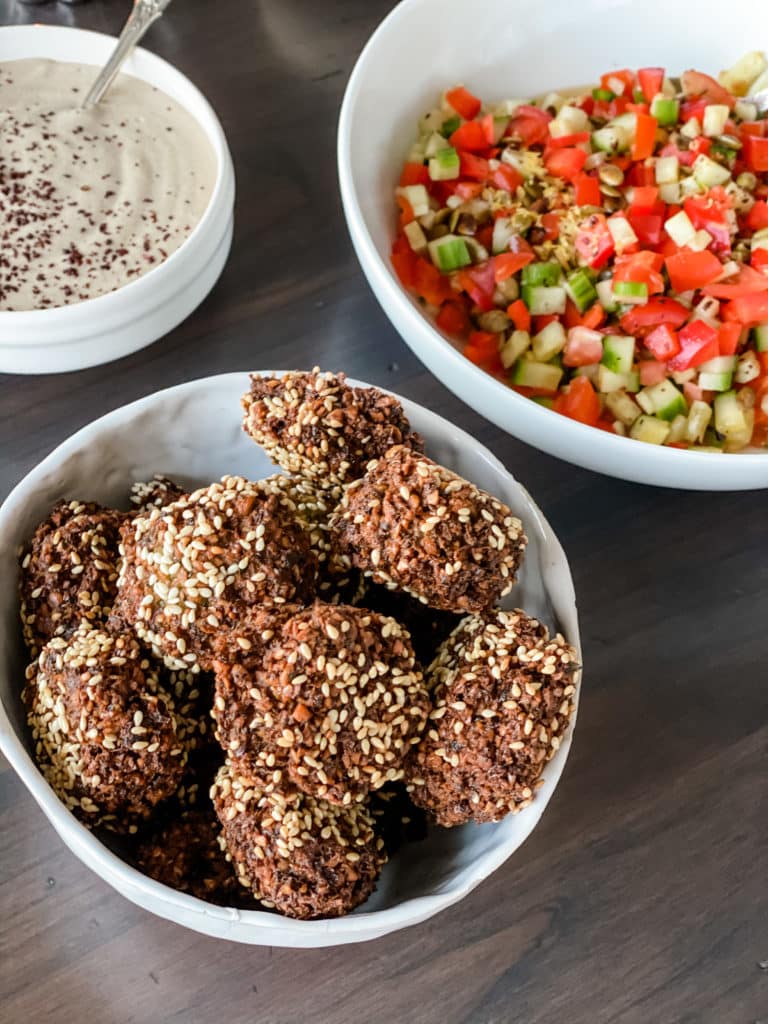
I have not read a single book since we started our stay-at-home confinement. I just can't get my mind to slow down enough to focus on a story. By the time Theo goes to bed at night, I'm so tired. Having a four-year-old during this time means you're never bored, but you're never resting.
But I have been cooking. After Theo is asleep, Elie and I put on some music or he plays guitar, and I stand in the kitchen to chop and taste and stir. Cooking never feels like work to me. Quite the opposite, it is a form of daily meditation and a source of peace.
When social distancing--or compassionate containment--first began, I decided to use my large library of cookbooks to try new recipes. Each week, I've given Elie a stack of cookbooks, and he selects recipes and marks them with gratitude cards, small cards with short phrases of reflection like "no one can stop us from having our own thoughts' or 'in the middle of the night, and in the early morning, we have the world to ourselves.' It feels meaningful to mark each recipe with gratitude.
Even in the midst of this, we have so much to be grateful for.
Our recipe testing has been Ottolenghi-heavy. I turned the Lamb siniyah from Ottolenghi Simple into a vegan dish, replacing the lamb with an eggplant and mushroom stew. It is not pretty, but so savory and satisfying. From the same cookbook, I turned the lamb and pistachio patties into chicken and pistachio patties using ground chicken thighs, and we also made the seeded chicken schnitzel that I served with mashed cauliflower. So good. We also loved the anchovy and samphire spaghetti, where I replaced the samphire with shaved asparagus. Although my copy of the Jerusalem cookbook is dog-eared and stained, Ottolenghi Simple might be my favorite of his because of the variety and freshness of the recipes. We're not done with that cookbook yet.
On a similar pasta theme, from the Six Seasons cookbook, we loved the Pasta alla Gricia, but I replaced the sugar snap peas with shaved asparagus and spiralized zucchini. From the same book, we made the pumpkin bolognese, replacing the pumpkin with butternut squash and the ground beef and pork with ground chicken thighs. I will make that again when the weather begins to cool this fall. The Squash and Tuna Melt was really good, but next time I would make it a little saucier. And we added pasta to the Broccoli Rabe, Mozzarella, Anchovy, and Spicy Tomato. Baked pasta is one of Elie's favorites, and this version was great.
From Cannelle et Vanille, her paella inspired my own version. Her entire cookbook is beautiful and filled with inspiring recipes, but I am especially grateful for her dedication to gluten-free bread baking, because it has brought gluten-free sourdough bread to my life. I've been making two loaves a week, along with the sourdough waffles. We also love her recipe for banana bread, using up all those bananas that languish on the counter.
Back to Ottolenghi, we cooked the cover of Jerusalem, Braised eggs with lamb, tahini and sumac. It would be a beautiful dish for a small dinner party. We loved the stuffed eggplant with lamb and pine nuts, and I'm planning to share the version I created. And the falafel, which I made as part of a larger Israeli spread, with roasted cauliflower, burnt eggplant, Israeli salad, zhug, tahini sauce and hummus.
When I try new recipes, I'm never bound to them. I use recipes as inspiration or a roadmap, tweaking ingredients or methods to our own tastes. It's part of what makes cooking so fun. And right now, cooking and eating foods of a culture or place lets us travel from our home as we dream of future adventures, like returning to Israel.
Here's my version of falafel. It's much easier and less messier than you think it will be. I hope you try it and imagine you're sitting at a small table in the center of the raucous shuk in Tel Aviv, happily dusty and sweaty from walking. Hot sun on your face. Tahini sauce dripping from your fingers. The sounds of vendors shouting and music blaring. I can't wait to go back. Until then, I'll be cooking.
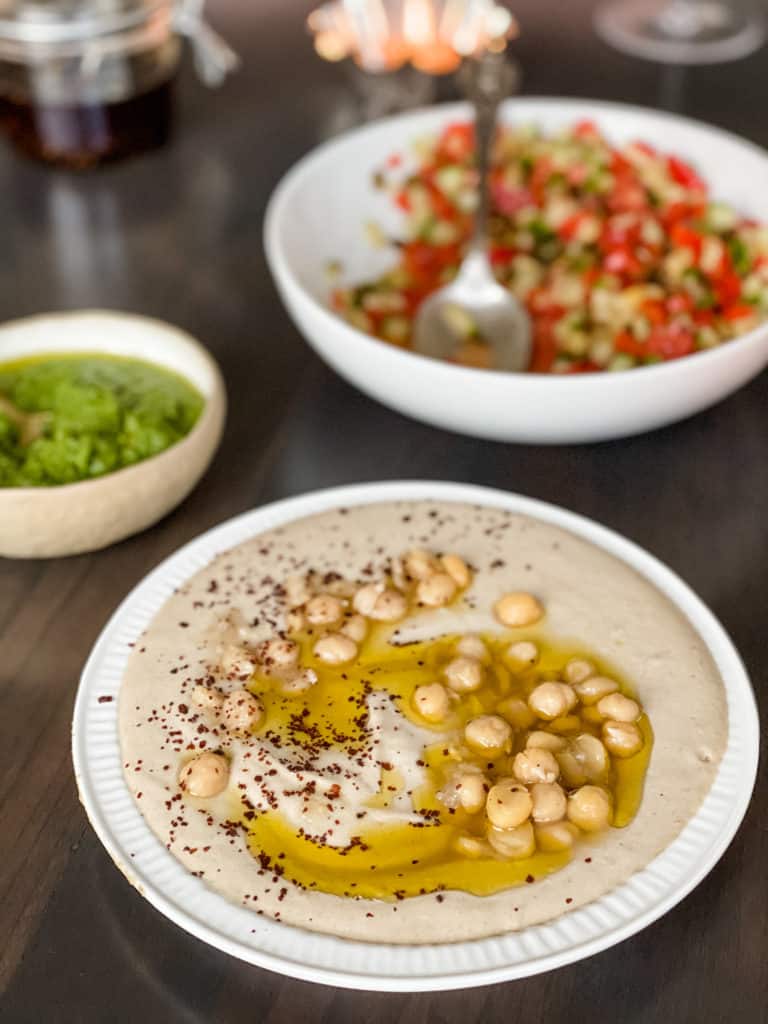
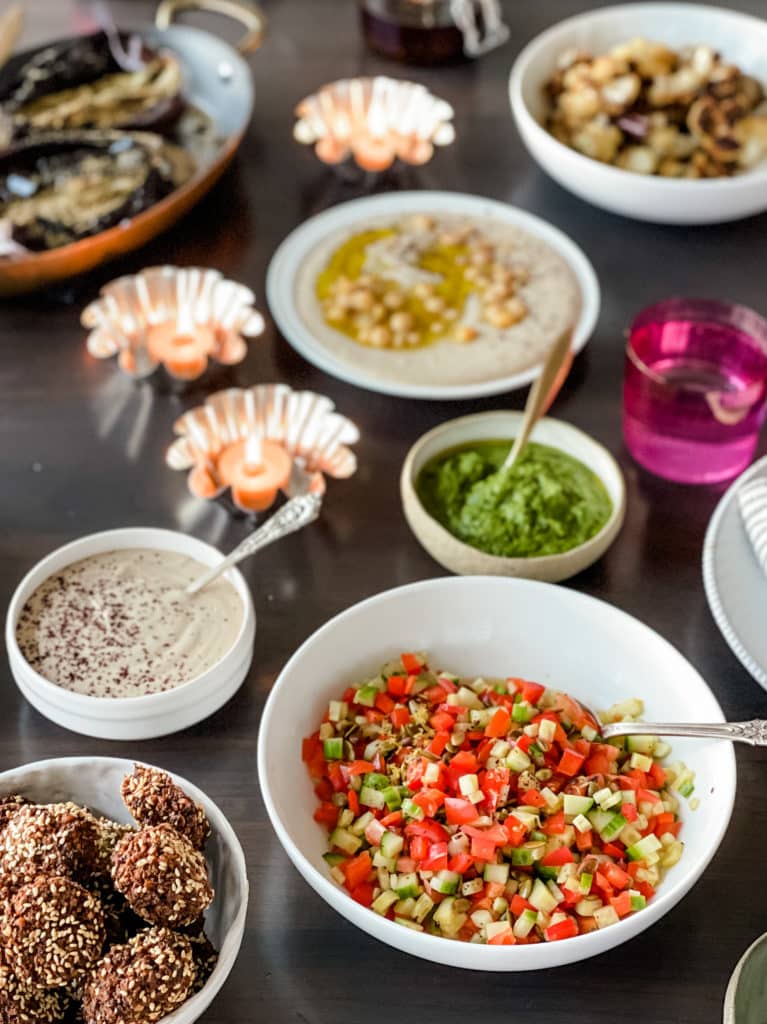
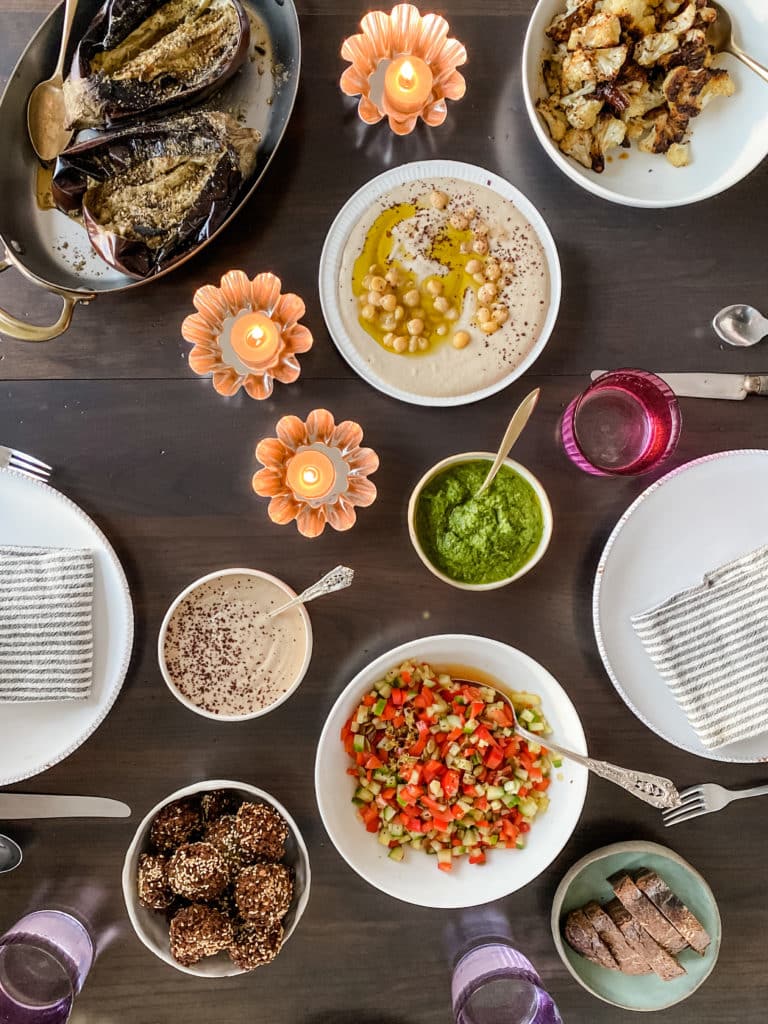
I used Ottolenghi's recipe in Jerusalem as inspiration for this recipe. Mine is an herb-ier, brighter version. It's also gluten-free, replacing regular wheat flour with rice flour. If you don't have whole spices, just use ground spices. They will work great. And if you don't have aleppo-style pepper, a small pinch of red pepper flakes or a little cayenne will be just fine. Also, I'm not afraid to fry in extra virgin olive oil. We're only heating this oil to 350 degrees F, which is within the smoke point of olive oil. It tastes better and is healthier than using any other seed or vegetable oil.
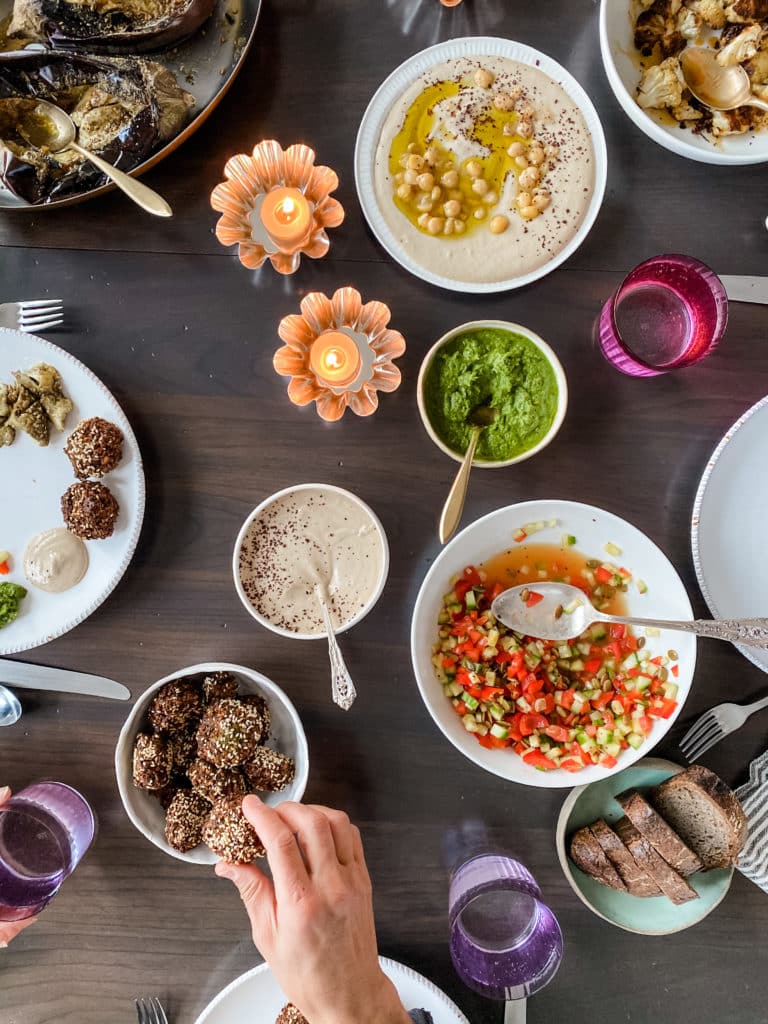
The day before you are going to make the falafel, place the chickpeas in a bowl and cover them with cold water. Set on the counter to soak overnight, for at least 12 hours. But 24 hours is even better.
Place the cumin, coriander and cardamom seeds in a small pan. Toast over low heat for a few minutes, until fragrant. Grind with a mortar and pestle or with a spice grinder.
Coarsely chop the onion and place in a food processor. Blend until very finely chopped. Add the garlic and blend again. Add the herbs and process until everything is finely chopped.
Drain the chickpeas and add them to the food processor along with the onion mixture. Pulse the chickpeas until they are finely chopped, but not mushy. Add the aleppo-style pepper, spice mixture, baking powder, sea salt and lemon zest. Pulse once more, just to combine.
Pour the mixture into a large bowl and add the water and rice flour. Mix well, with your hands or a wooden spoon. Cover the mixture and place in the refrigerator for at least an hour and up to overnight.
Fill a deep skillet (like a cast iron pan) with enough oil to come up 2 1/2 - 3 inches on the side. Heat the oil to 350 degrees F. (If you don't have a thermometer, test one falafel. The oil should vigorously bubble when the falafel is added to the pan, and it should cook through completely in four minutes without burning.)
Pour some raw sesame seeds on a small plate. Using an ice cream scoop or a tablespoon, scoop about 1 ounce of the mixture (about the size of a walnut). Press with your hands to form a ball. (You can also use a falafel maker, if you have one). Lightly press the ball with sesame seeds and then fry the falafel for 4 minutes, until deeply browned and cooked through, dry on the inside. Depending on the depth of your oil, you may need to turn them. Repeat with the remaining mixture, being sure not to crowd the pan and cook too many at once.
Once cooked, place on a plate lined with paper towels, to drain off any excess oil.
Serve as a snack, with tahini sauce. Stuffed into a pita, with Israeli salad, tahini and zhug. Or as part of a larger Israeli dinner.
Big hugs everyone. xoxo
I love when I see an email from a friend, and that’s how I think of you. I hope you feel the same. In my newsletter, I share the kinds of recipes and stories I used to blog about. You’ll get the recipes I’m cooking for my family as well as anything else I think might bring more connection or more joy.